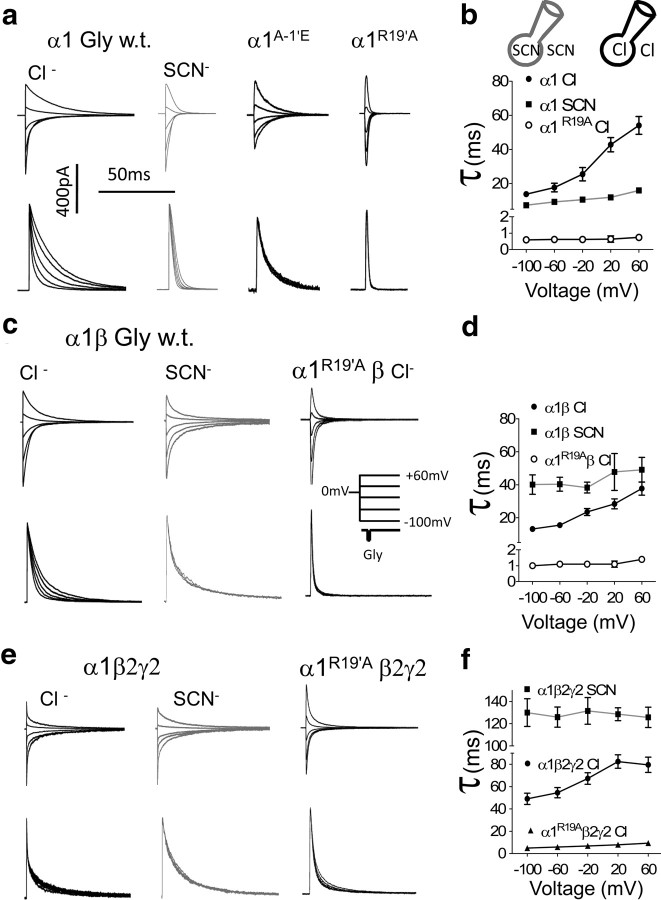Figure 8.
The nature of the permeating ion affects the time course of the current relaxation and its voltage dependence for α1 and α1β Gly receptors and for α1β2γ2 GABA receptors. Replacing symmetrical high chloride (black) with SCN (gray) changes the time course of the current relaxation Gly and GABA receptors over a range of voltages (from −100 to +60 mV) as shown in a (Gly homomeric), c (Gly heteromeric), and e (GABA). The bottom part of these panels shows the same traces normalized to their peaks and inverted as necessary to facilitate comparison of the decay phase at each voltage. b, d, and f show the values of the weighted τ of wild-type and mutant GlyR and GABAR plotted against the holding potential. Note how the decay of wild-type currents carried by chloride slows with depolarization, whereas currents carried by thiocyanate are almost insensitive to voltage. The effect of voltage is also abolished in chloride-insensitive mutants, such as the GlyR mutated to be cationic (α1A−1′E, third family of traces in a), the α1R19′A mutants in both homomeric and heteromeric Gly receptors (last families of traces in a and c), and the α1R19′Aβ2γ2 GABA receptors (last family of traces in e) (see also Tables 3, 4).

